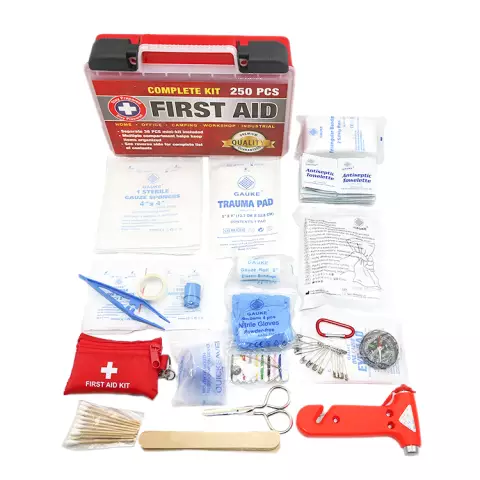- Author Rachel Wainwright [email protected].
- Public 2023-12-15 07:39.
- Last modified 2025-11-02 20:14.
Home first aid kit: rules of acquisition and use
Everyone knows that self-medication is dangerous. But it is almost impossible to do without it completely. The pace of modern life does not allow going to the doctor with every minor nuisance, and information on the methods of independent medical care is quite available. This means that we have only one thing left: to learn to provide this assistance competently and within the limits within which it is permissible for a person who does not have special education.
As part of this training, you first need to figure out how to use a home first aid kit.

Source: depositphotos.com
What medications do you need to keep in your home?
The contents of a home first aid kit largely depend on the health and age of the family members. For example, if the elderly and chronic patients live in the house, then the medicines required to maintain their normal well-being should always be at hand. If there are children in the family, the first aid kit should be supplemented with medicines and care products that are optimal for this age group.
And in each apartment it is necessary to store a set of medicines common to all, which can come in handy literally at any moment. It should contain:
- dressings - cotton wool, bandages, plaster, BF-6 glue, gauze. You can add cotton pads and sticks, wet wipes soaked in an antiseptic, etc.;
- means for treating wounds - hydrogen peroxide, iodine, brilliant green, furacilin, healing sprays and ointments;
- pain relievers and antipyretic drugs. When choosing, you should be guided by the advice of a doctor, but paracetamol should still be kept in the first-aid kit;
- antispasmodic (no-shpa or drotaverine);
- antihistamines (antiallergic) drugs;
- herbal sedatives (tincture of valerian or motherwort);
- medicines that help relieve symptoms of colds and respiratory problems. The choice of the most effective medicines remains with the specialist, but lozenges for coughs or sore throats, gargles, herbal drops for the common cold are needed in every home. In addition, it is advisable to include mustard plasters in the first-aid kit;
- means of combating disorders of the gastrointestinal tract - diarrhea, constipation, heartburn, nausea; preparations containing enzymes. The first-aid kit should also contain medicines intended for first aid in case of poisoning (activated carbon, smectite, etc.);
- first aid for cores (for example, validol). If there is a patient with angina pectoris in the family, it is necessary to keep a “duty” package of nitroglycerin in the first-aid kit;
- ammonia;
- ointments, gels, or rubbing to relieve pain from sprains and bruises.
Keep thermometers, pipettes, fingertips and blunt scissors in a separate place. It is very good if the house has an inhaler and a blood pressure monitor, and if relevant, then a glucometer.

Source: depositphotos.com
We organize the storage of medicines competently
Products to be stored at low temperatures must be refrigerated. It is not necessary to set aside an entire shelf for them, but it is important that they do not come into contact with food. It is best to place your medication in a tight-fitting plastic box.
To store the rest of the preparations, it is worth picking up a spacious box, casket or basket with a lid and putting it in a closet. It is very important that this cabinet is locked and that children do not have access to the keys. By the way, it is recommended to store childcare products and children's medicines separately from the first aid kit for adults. This is necessary not only in order to quickly find a drug for a baby in an emergency, but also so as not to confuse medicines: products for children often have the same names as for adults, but contain a lower concentration of active ingredients.
Now about the most important thing: sooner or later all drugs expire, and it is dangerous to use expired drugs. Therefore, the responsible owner of the first-aid kit not only correctly completes and stores it, but also once every six months examines the withdrawal of expired drugs and their replacement with new ones, as well as replenishment of the deficit. Then the risk of being left at the most inopportune moment without the necessary drug or material is excluded.
The ability to provide yourself and your loved ones with first aid is the basis of the concept of responsible self-treatment, actively promoted by the World Health Organization. Recently, this concept has become interested in our country; it was approved by the leadership of the Russian Ministry of Health. Obtaining the knowledge and skills necessary for such assistance is a civic duty of every modern person.
YouTube video related to the article:

Maria Kulkes Medical journalist About the author
Education: First Moscow State Medical University named after I. M. Sechenov, specialty "General Medicine".
Found a mistake in the text? Select it and press Ctrl + Enter.






